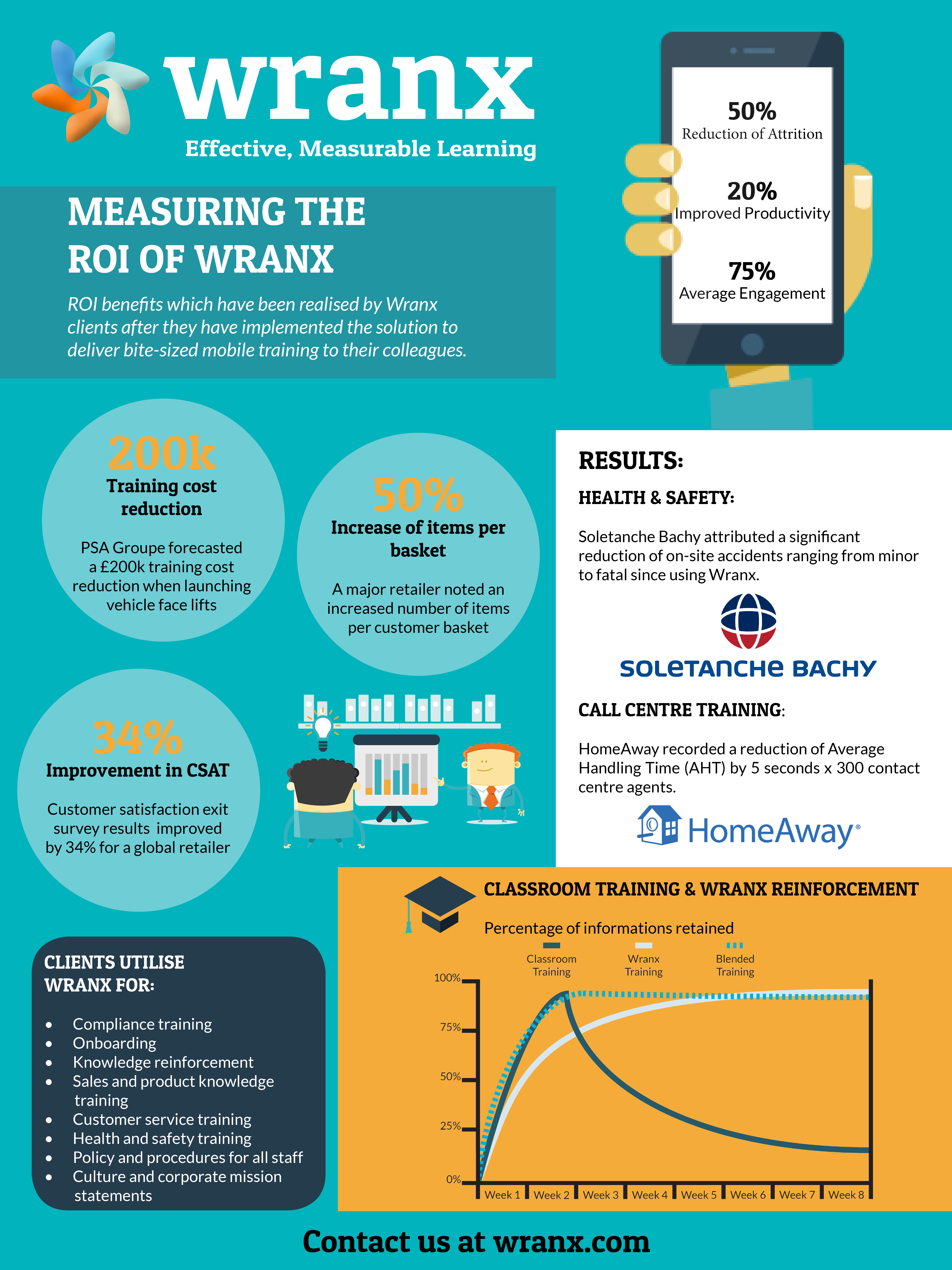Calculating the return on investment for training can be challenging as the benefits and outcomes can be difficult to measure. Training can be a significant investment for any organisation when all the factors and associated costs are calculated. So it’s important when requesting a budget to deliver any kind of training that you can demonstrate a healthy and measurable return on investment.
Every organisation will have different ratios of ROI, so ensure you are aware of what the expected return should be. This blog will help you calculate the cost of the training and measure the outcomes of training to assess the true return on investment.
What’s The True Cost Of Training?
The cost of training is not simply the cost of content creation, an external trainer or the licence fee of an LMS. When all the costs are factored in they can end up being a lot higher than anticipated, which means the returns have to increase accordingly for the training to remain financially viable.
Additional costs that should be factored into the overall cost are: productivity losses as people in training can’t do their actual job, travel costs to attend training, time consuming content reviews and updates. All of these are increased the more disparate and global a learning group is.
It is also important to understand the cost of the implications and risks associated by not completing the training. Regulatory compliance breach fines can now be in the millions, so training that mitigates that risk is, not only prudent, but often mandatory.
If Hermann Ebbinghaus is to be believed, up to 90% of knowledge can fade in a short space of time, thereby increasing the cost of that training by a decrease in its long term application.
How Can Wranx Measure Success?
Success is usually the most difficult thing to measure when it comes to learning, whether it’s increases learner’s knowledge, financially or risk reduction.
One of the unique benefits of Wranx are the Certainty Based Marking assessments that measure the learners certainty as well as the accuracy of the learners knowledge retention post training. This enables organisations to measure knowledge retention (if a pre and post-assessment are used), identify risk in their employee base which enables effective measurement of the success of training.
Wranx also has detailed performance analytics that allows managers and the L&D team to review individual learner engagement, performance and development areas. Learner analytics data can be cross referenced with KPI’s and any improvements can be linked to the training delivered.
The final stage of calculating the ROI of training is calculating the financial gain due to KPI improvements you can correlate to the training L&D has delivered.
Here are some examples:
In Conclusion
Once you have calculated the true cost of training and then calculated measurable financial return or the cost of the risk mitigated, you may find you have not reached the ROI criteria your company sets so what can you do? The easy answer is speak to Wranx. We can significantly reduce the cost of training by delivering engaging, effective training straight to learners wherever they are. On average, an hour of training delivered by Wranx costs the equivalent of a few cups of coffee!
Wranx’s performance analytics and assessments can effectively measure the effectiveness of learner’s knowledge retention and link training activity to increases in KPI’s and revenue or margin. Using Wranx means you are far more likely to demonstrate that your training delivers the return on investment your organisation requires, due to the relatively low cost and measurable gains Wranx delivers.






